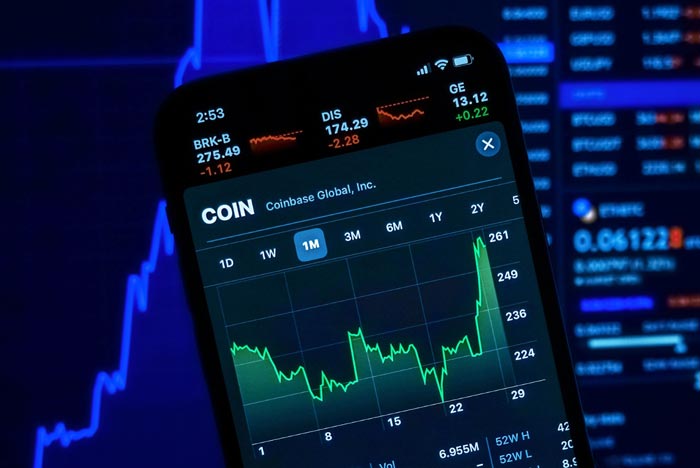Satoshi Nakamoto published the Bitcoin white paper on October 31, 2008. Satoshi acquired Bitcoin.org on August 18, 2008, starting Bitcoin development. Block chain, which requires immutable data structures, makes Bitcoin and other cryptocurrencies possible. That’s beyond this essay’s scope.
Bitcoin’s history began. Satoshi Nakamoto mined the first Bitcoin block on January 3, 2009. This first block memorializes the bank bailouts and centralized financial system that inspired Bitcoin. The Times piece is cited.
The Genesis Block is so named because it created 50 Bitcoins. Bitcoin was nearly worthless during its first few months. One BTC cost 14 cents in April 2010, six months after bitcoin trading began. Early in November, the price “surge[d]” to 36 cents before settling at 29 cents. You can learn more about hot crypto prices in Coinwire’s Price Predictions section.
Market Forms (2010-2014)
Bitcoin was beneficial even when its value was low. The price reached $1.06 in February 2011 before falling to 87 cents. A Forbes piece on “crypto money” boosted prices in spring. Bitcoin rose from 86 cents in early April to $8.89 by May.
After a Gawker story described its popularity among internet drug sellers, this money’s worth doubled from $9 on June 1 to nearly $27 in a week. Bitcoins were valued at $130,000,000. The value dropped to $4.77 by September 2011.
In October, Litecoin, a Bitcoin split, appeared. PPCoin, Namecoin, and 10 other cryptocurrencies behind Litecoin in market cap, according to CoinMarketCap’s May 2013 data. These digital currencies, some of which were forked from Bitcoin’s code and others generated from scratch, were called “altcoins”.
The Bitcoin Foundation’s September 2012 debut corresponded with Bitcoin’s 2012 price rises. OpenCoin became Ripple the same year. Venture capital came the next year.
Due to legal, criminal, regulatory, and technical issues, Bitcoin’s price fluctuated significantly throughout 2013. By November 20, it was valued $378, down from $755. On November 30, it reached $1,163. This started another long-term slump that sent Bitcoin below $152 again by January 2015.

Scams Dominate News (2014-2016)
Digital money’s anonymity and decentralization attract crooks even if it’s not their goal. After losing 850,000 bitcoin, Mt.Gox, the largest bitcoin exchange, declared bankruptcy in January 2014. It’s unclear what happened, but Mt.Gox may have sold the stolen BTC on other exchanges for years before discovering their accounts were empty. Probably about 2011. After CEO Mark Karpeles was acquitted of fraud in 2019, the stolen BTC is unknown.
The assault was not isolated, but it did serve as a warning, therefore exchange security has been greatly increased. Smaller exchanges are still attacked, while larger platforms now secure their reserve cash better. Binance’s Secure Asset Fund for Users protects users’ funds in emergencies.
Crypto traders should store their bitcoin in a software or hardware wallet instead of an exchange. Before bitcoins, these wallets were rare.
Bitcoin has taken off worldwide (2016-2018)
From January 2016 to January 2017, bitcoin rose from $434 to $998. In July 2017, the Bitcoin community accepted a software upgrade enabling Lightning Network support and improved security.
A week following the August upgrade, Bitcoin’s price was $2,700. Bitcoin’s price rose beyond $20,000 on December 17, 2017.
After its July 2015 debut, Ethereum became the second-largest digital currency by market valuation. Its introduction of smart contracts to bitcoin has generated over 200,000 projects and many new uses (and counting). Ethereum, unlike Bitcoin, permits other platforms with their own cryptocurrencies and use cases on its chain. Cardano, Tezos, Neo, and others followed a similar trend.

Repeated burst and recovery… (2018-Present)
Bitcoin’s price fell after hitting $19,783. Ethereum’s January 2018 ATH of $1,400 was short-lived. Financial limitations and security concerns drove bitcoin’s price down to $3,700 by 2018. (due to quasi exchange breaches).
Prices fell temporarily. MicroStrategy’s $250 million bitcoin purchase in August 2020 helped revive bitcoin in late 2020. The market followed, and Tesla’s $1.5 billion bitcoin purchase in early 2021 pushed prices even higher. Bitcoin reached $69k in November.
Since then, the market has fallen again owing to widespread economic worry induced by rising prices, interest rates, and violence. However, crypto values collapsed at the same time as global stock markets in late 2021 and 2022, demonstrating their increasing interconnectedness.
Cryptocurrencies’ wild price fluctuations are interesting and unsettling, but blockchain technology might alter many parts of our everyday lives. Blockchain technology can be utilized in practically every area of the business, whether to safeguard money so only the owner can access them, to promote inexpensive securities exchange alternatives, or to offer reliable data for your strategy.
As the market stabilizes with more information and new industries like stablecoins and decentralized finance (DeFi) develop, it’s easy to become excited about cryptocurrency’s investment and technical possibilities. Whether Bitcoin is your main interest or not, blockchain technology is interesting.












